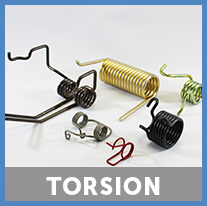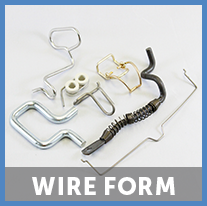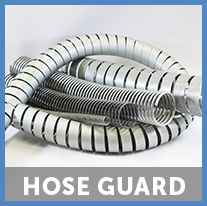It is not the purpose of this web page to give a detailed tutorial in basic spring design. Instead, we will try to cover a variety of topics often overlooked during spring design and provide a summary of useful information related to spring design.
The basic formulas for rate and stress can be found in many textbooks or on the Internet. We recommend "Handbook of Spring Design" which is published by the Spring Manufacturers Institute. This handbook is a good source for the basics and more. It can be ordered on the SMI web site.
There are also many spring design computer programs available for purchase or download. The SMI site has a very good program available called "Advanced Spring Design". Rockford Spring Company is also always available to help with spring design.
|
Step 1:
|
Spring Material: |
||||||||||||||||||||||||||||||||
|
Step 2:
|
Spring envelope: At this point, it is important to remember that for a given set of loads and deflections, the size of the spring envelope available will dictate the stresses on the spring and therefore the life of the spring. It is all too common to allow too small of an area for the spring. It is possible to make some improvements with special materials, shot peen and press, but for the most part, the available envelope for the spring will dictate stresses. If there is not room for a spring large enough for the loads and deflection, then complete redesign of the mating parts may be the only option available. Contact Rockford Spring for help with your spring design before locking in the envelope size. |
||||||||||||||||||||||||||||||||
|
Step 3: |
Tolerancing: For most applications it is the load and or rate that is important, not the free length. Leaving the free length and number of coils reference allows the spring manufacturer something to adjust in order to hold the loads. For the same reasons, the designer should avoid specifying a tolerance on a torsion spring free position. Avoid specifying a solid height unless it is specifically needed in the spring's application. Designing a spring with the Max solid right at the calculated solid (or worse, below) can increase manufacturing cost. The designer should, when ever possible, allow a half of a wire diameter for max solid above calculated solid to allow for variation in the amount of grind and the amount of coils. See the SMI "Spring Design Handbook" for commercial spring tolerances. |
||||||||||||||||||||||||||||||||
|
Step 4:
|
Linear Range: The first part of the deflection and the last part as the spring approaches solid are not linear. Close load tolerances cannot be held outside of the linear range of the spring. The linear part of the spring is only between 15% of deflection and 85% of deflection. |
||||||||||||||||||||||||||||||||
|
Step 5: |
Buckling: There are several factors used to determine if a spring will buckle. Slenderness ratio, grind, how ends are held and how far the spring is compressed are a few of the factors. Rockford Spring can help you determine if your spring is susceptible to buckling. |
||||||||||||||||||||||||||||||||
|
Step 6: |
Static Loading: The following charts give the maximum percent of minimum tensile strength allowable for compression springs and torsion springs. For extension springs, the values for compression springs can be used for the body. The hooks have a combination of bending stresses and torsional stresses. The bending stresses in the hooks should be kept 10% under the bending stresses allowable for a torsion spring and the torsional stresses in the hooks should be kept 10% under the allowable torsional stresses for a compression spring. (before set removed values)
|
||||||||||||||||||||||||||||||||
|
Step 7:
|
Cyclic Applications: |
||||||||||||||||||||||||||||||||






